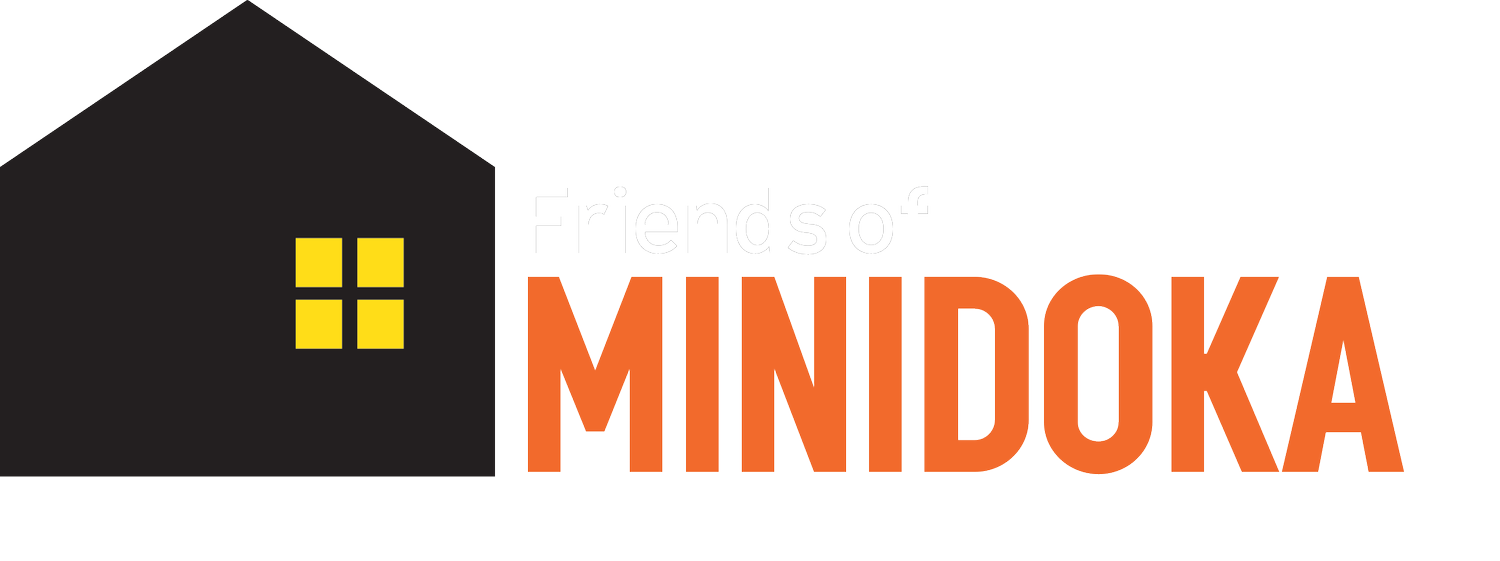Letter from the Executive Director
Dear Friends,
As 2019 begins to wind down, I find myself reflecting on a whirlwind year full of mission-filled work and in gratitude of the community that is Friends of Minidoka: whether you consider yourself survivors, descendants, individual members, partner organizations passionately carrying out similar work, fellow pilgrims at these confinement sites, or newcomers to this history, I’m grateful to be on this journey with you. This year brought with it an incredible milestone in the dedication of the new visitor center at Minidoka National Historic Site, which gave us cause to celebrate the years of collective effort in bringing the site to what it is today, but more importantly to reaffirm our purpose moving forward: advocating for the continued protection of the site, educating the public about this history, and preserving the legacy of Minidoka for future generations.
Throughout the summer and fall, we were fortunate to engage in activities to strengthen our relationships with various partners. We are grateful for opportunities to conduct outreach in other communities and to engage new audiences in the mission of Friends of Minidoka and the developments at the site. In August I attended the 90th annual Japanese Americans Citizens League (JACL) convention in Salt Lake City, which jointly hosted the second Japanese American Confinement Sites Consortium (JACSC) meeting of 2019. FOM staff and board members enjoyed fellowship with Consortium and JACL members from around the nation. FOM was represented throughout the weekend on panel discussions on the history of the JACSC; partnership best practices for NPS and Japanese American organizations; and the lessons of redress for community solidarity moving forward.
In late September, FOM joined organizations from throughout the Pacific Northwest at the the Wing Luke Museum for an NPS AAPI Theme Study convening. It was an inspiring weekend spent with old friends and new working towards a broader understanding of the role of historic sites affiliated with AAPI communities, and I was able to speak about Minidoka as part of a session titled “How to Connect Historic Preservation to Racial Healing.” I was especially moved to tour the former US Immigration & Naturalization Service Building that served as Seattle’s detention and processing center for immigrants, including many of our Issei who were apprehended by the FBI immediately following the attack on Pearl Harbor. The Crystal City Pilgrimage in November was also an enlightening experience, with many sessions dedicated to increasing participants’ understanding of the unique history of the Japanese Latin American population, as well as the German American and Italian American populations that were incarcerated there.
We’ve continued to move forward at full steam with our efforts surrounding education, using the Minidoka documentary we are currently expanding as a tool for public engagement and building empathy among new audiences. With our partners the National Park Service and North Shore Productions, we hosted a screening of the 30-minute documentary Minidoka: An American Concentration Camp at the Western Museum Association conference held in Boise and were overwhelmed with the emotional response by much of the audience and the in-depth dialogue that followed. We look forward to screenings of the short film over the next few months in Portland, Bend, and Boise, as we continue to work on completing the extended version and educational curriculum package. We hope to see you at these events as well as the upcoming events throughout Idaho including the Minidoka Civil Liberties Symposium, Day of Remembrance, Minidoka visitor center grand opening, and the Smithsonian Institution traveling exhibition Righting a Wrong. Details for all of these are in this newsletter. You will also find our 2018 Donor Report included in this newsletter. As a small organization, we are so proud to be able to offer this variety of programming to support our mission of preserving the legacy of Minidoka, and we acknowledge that we could not do it alone. A resounding thank you to all of our partners and supporters — we are grateful for your support as we continue to do this important work.
Best,
Mia
Mia Russell
Executive Director

